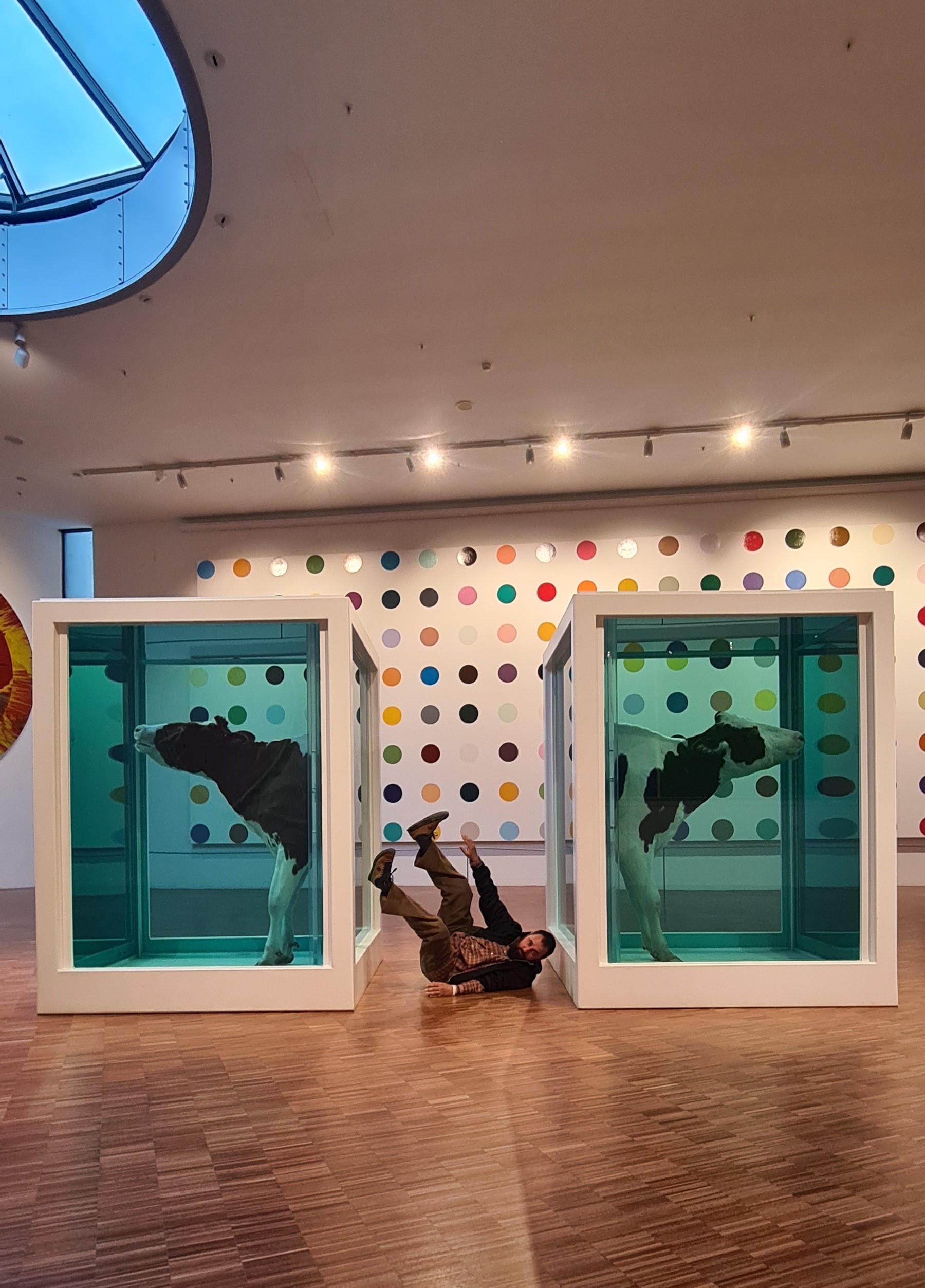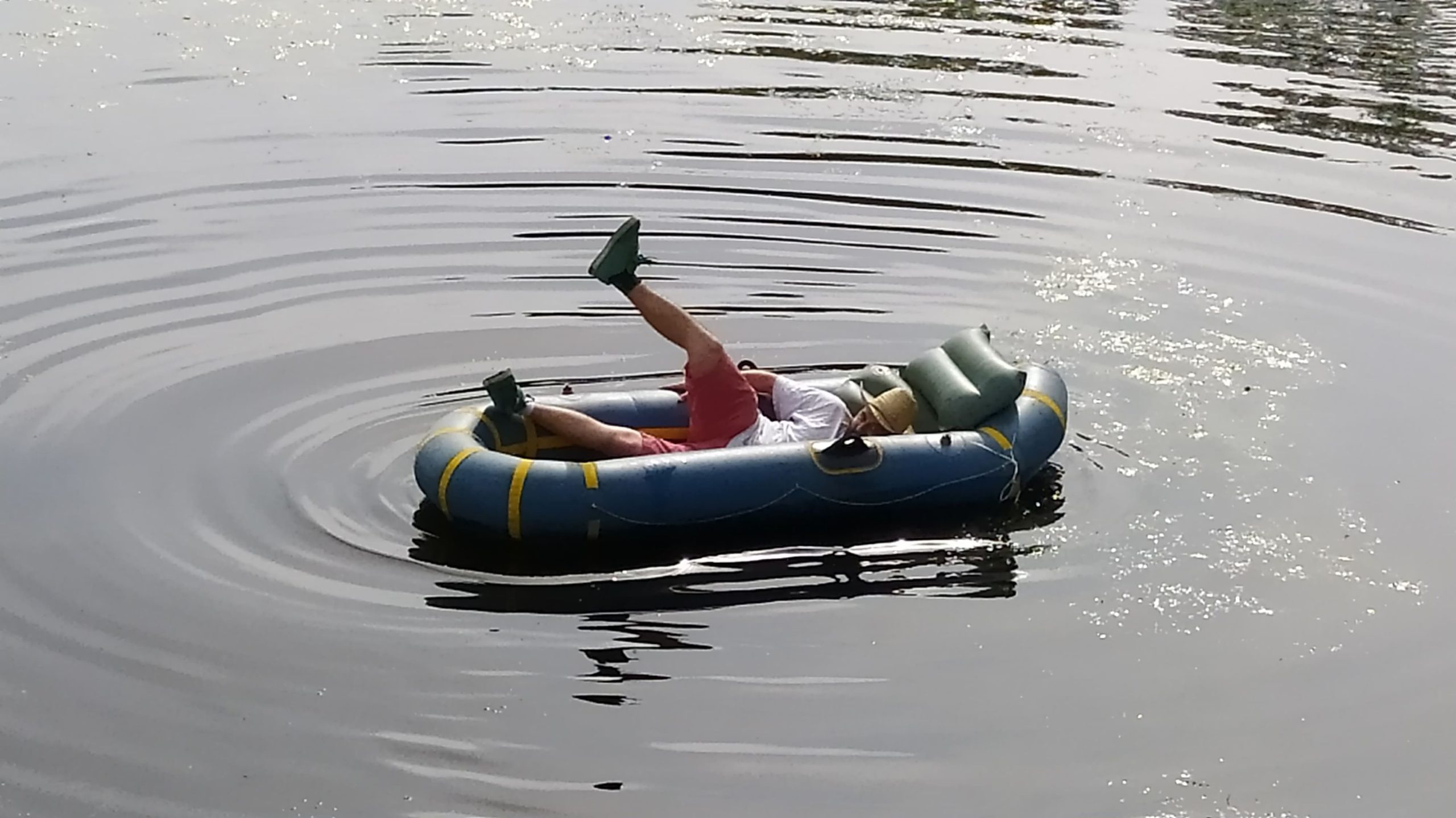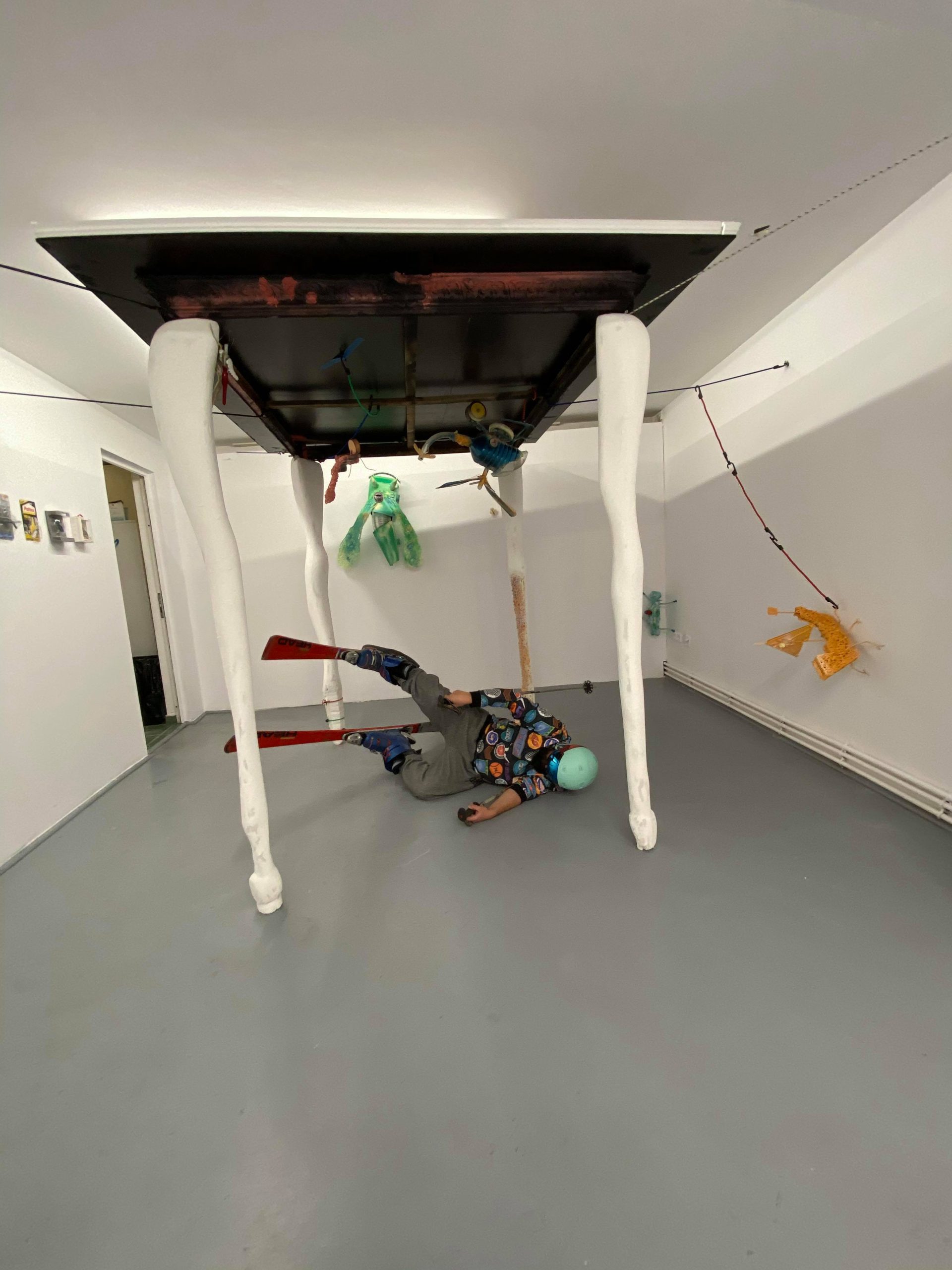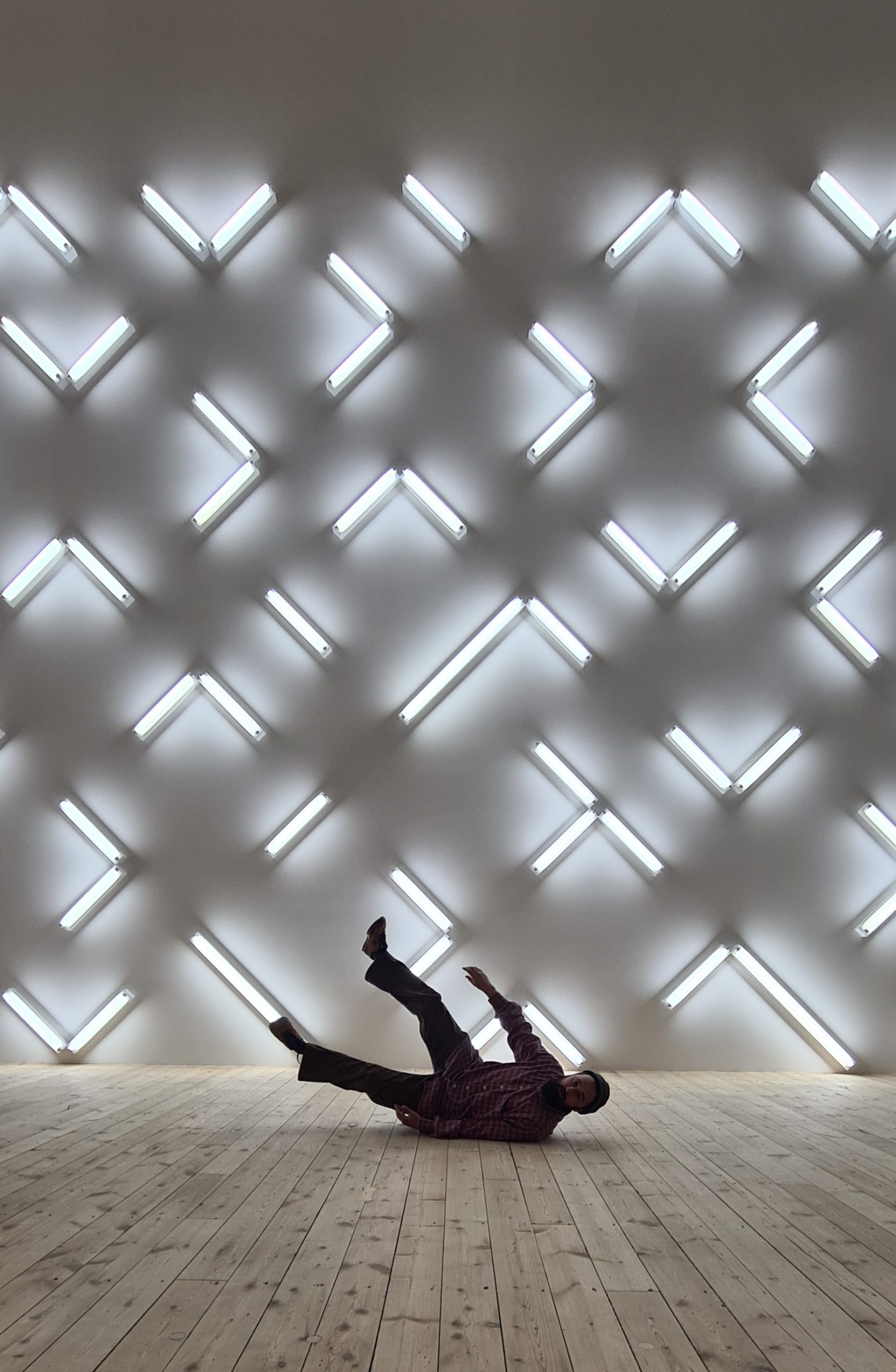Interview conducted by Evantia BARCA
Mircea Modreanu is one of the four Romanian artists who symbolically emigrated to America to examine, from an artistic perspective, the new meanings of the old myths, starting from the promise of material success or social mobility, towards contemporary nuances, such as unique community ideals or the freedom to choose your way of life.
In a road residency to America, Mircea Modreanu, Ilina Schileru, Lucian Sandu Milea, and Răzvan Năstase, artists from the independent collective E T A J artist-run space, will create on the streets, in the subway, in stations, and in airports, to exhibit at the end of the road at the Durden and Ray Gallery in Los Angeles.
Mircea Modreanu is a visual artist, cultural project manager, and gallerist. He attended the courses of the Faculty of Fine Arts at UAD Cluj, and immediately after completing his degree, he reconfigured his route to Bucharest. In 2014 he completed his master’s degree at UNArte’s graphics department, and a year later, he founded an NGO, representing his debut as a manager of cultural projects.
Since 2018 the E T A J artist-run space project was born; it has organized exhibitions in Bucharest at 43 George Enescu Street, where it has invited over 200 artists. In the lockdown, as a form of documentation and archiving, he started filming interviews with the artists he uploaded to the YouTube channel ETAJ TV; he is the coordinator of E T A J Magazine, a publication launched out of the desire to promote contemporary art and local artists.
You are four artists who leave Romania, simulating the limited conditions, with minimal resources, that migrants often have to face during the nomadic process. What are these travelers’ plans, challenges, hopes, or worries, and what are the stages in which your team will rebuild them?
The plan is to arrive at the destination with the checked baggage and, more importantly, the visual luggage we will pack from the airport. Our challenge, as a team and individually, is to gather “on the go” compositions duplicated by the impressions of the individual on the move – the migrant.
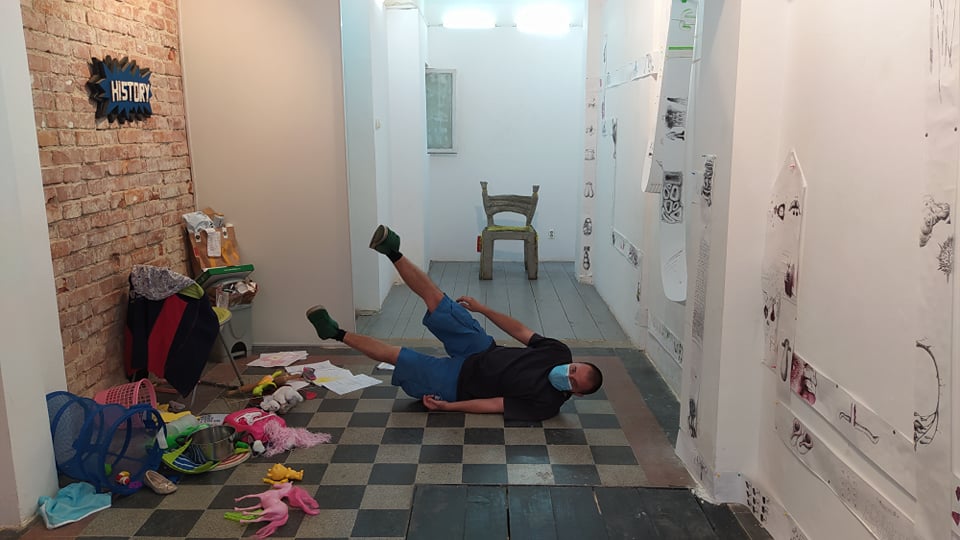
The project process emphasizes the reality of migration from a socio-cultural, artistic point of view and places it in a political framework. Can you explain this relationship?
The connections created around this process lead to a complex dialogue, and the aspects you mentioned will certainly be topics of discussion with the four American artists with whom we will be exhibiting at Durden & Ray. These experiences, beyond personal opinions and beliefs, bring before us a standard set of experiences and perceptions.
Do you think there are patterns in the waves of immigration conditioned by circumstances or according to the categories of migrants? From the old stories of those who fled the country hiding in the corn and hoping to be received in the camps in the West to those who go for strawberries and asparagus or, another segment, looking for opportunities to leave seconded by a multinational? How do they emigrate now, and why?
I have not studied the phenomenon of immigration. Still, from what I have observed so far in the relatively narrow circle of the artistic scene in Romania, those who leave are primarily of two types. Some want to continue to create, to be active as artists or operators in the host country while dealing with a field that includes or is closely related to art as a craft (in the case of galleries – of spaces, in the case of artists – of jobs/orders). They partially disconnect from their home country and what it has to offer.
Some go, see, check off a few events, exhibitions, and collaborations, and return. Here, for example, it can also be my case. I went, when I was a master’s student, with an Erasmus+ scholarship to Italy, to Macerata, where I spent six months and tried to do everything possible, from street drawings (which I offered to passers-by) to classes which I did not have at UNArte or intervention in public space and, towards the end, a personal exhibition. In other words, I took “the best” from a country that was not “home.”
Are they still immigrating to America? How will this concept be included in your traveling performance?
They still emigrate to America. (laughs) I saw many people at the embassy, including some ladies, let’s say, octogenarians at first impression. Regarding who is emigrating, the experience at the visa counters showed me that, as in the case of ETAJ members, “there is no conventional pattern.” So far, for me, any unexplored territory is at least worth visiting, and I think even more so that if a group of artists with common visions calls you to America, you should go.
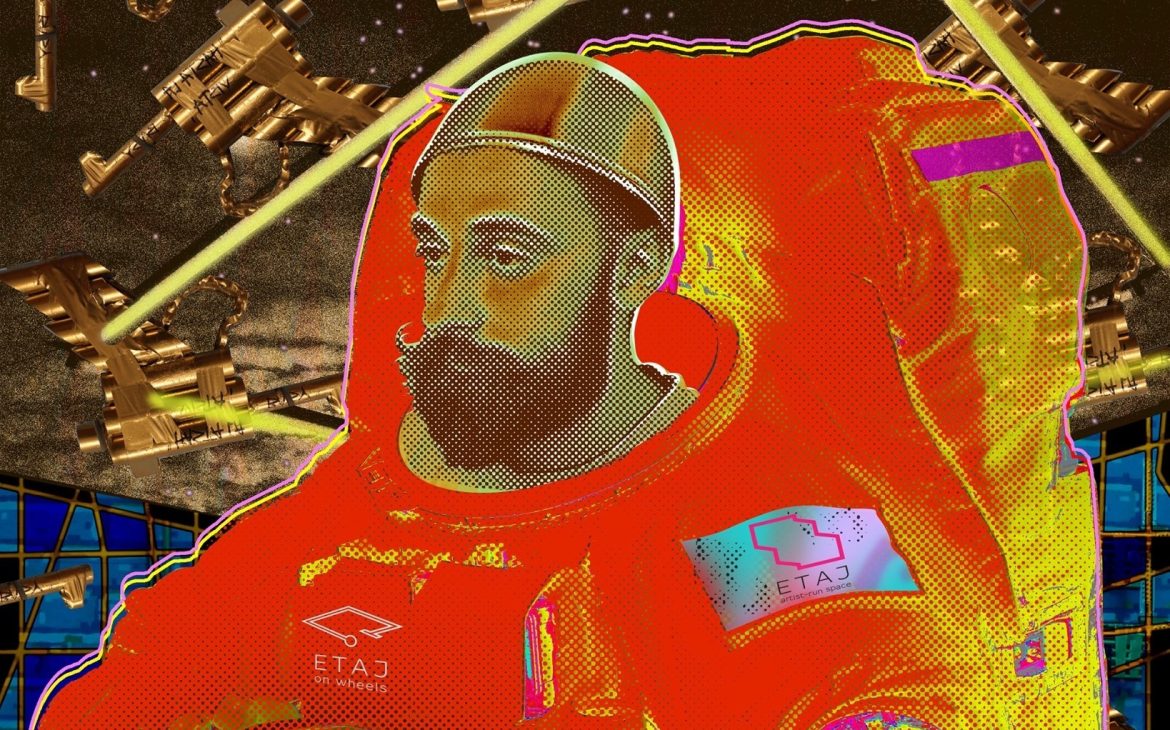
Do younger generations still have the American dream? After all, it is a brand launched in the 1930s, which promised our grandparents freedom, equal rights, and prosperity. They passed it on to our parents, and it manifested itself most powerfully after the events of ’89, when, also likely, the artists included in this project were not born. What does the contemporary American dream look like?
I wonder if the American Dream still has meaning today. Instead, I have heard the phrase “land of all possibilities” more often than “the American dream,” right now, I am leaning toward checking the land rather than the dream.
Take the story from Eastern Europe to Los Angeles, one of the most important cultural centers in the world, where, in addition to being the center of world cinema, there are more than 190 art galleries. An aggregation that increases quality but also competitiveness. Which of the Los Angeles stories inspire you for this performance?
It may sound bizarre, but in reality, I was not inspired by the mythologies of Los Angeles, but by my stories, which I want to pass on to others. My work will be based on the idea behind the Modreanu-n Cadere project, to “invade” various spaces, using what I find around L.A. (garbage, plastics, cardboard, sticks, etc.) to create Site-specific work with a twist 🙂
Upon arrival in Los Angeles, you and the group will build, together with five other American artists, a collaborative exhibition in the Durden and Ray gallery space – with the results of the creative processes during the trip – sketches, drawings, and other forms (audio and video art, written essay or others). Of course, you’ll see what inspires you as it happens, but usually, there’s a waiting horizon. How do you see things? Sketching the profile of a passenger on the plane, jotting down a snippet of conversation?
Exact. The mention that on the plane, I will sketch not a portrait but a plan of the extensive work (composed of several elements). Also, during the flight, I will draw several models of patterns with which, later, I will decorate the wall on which the work will be hung.

“iMigrate. The Biology of Transition” – is the idea of biology in the title of this performance a simple poetic license, or does it have a foundation?
Biology is being used metaphorically. Ilina Schileru, our colleague, put what the four of us discussed at various stages into words. The general idea refers to migration and the inevitable transformations during this standard exploration process (tourist, artistic, socio-cultural).
What is your contribution to this project? What do you think of Los Angeles?
The idea I started in the conception of the works has its roots in a project started in 2019. It is about the ‘falling back’ position that I launched with the Modreanu-n Cădere project. I will make a series of works in plaster, using objects collected from the street, packaging, sticks, and cardboard, concentrated around the previously mentioned position. The ensemble will be built from plasterboard with irregular internal joints, like puzzle pieces.
It is a new challenge for me, especially for the continuity of the experiments of the last years, with plaster as a base material. Part of the work will be done on the plane, and prepare the actual assembly and casting action by sketching and collecting moving images.
I emphasize flight as the initial stage, on the road (train, bus) as an intermediate stage, and on the gallery space as the final stage of creating the works. The Bucharest – Los Angeles route will mark the unfolding of the stages, highlighting the specificity of the places we crossed with our hands, feet, and eyes.
You set out to question the sociocultural coordinates of artistic practices in the (post)pandemic season by posing multiple problems that the entire (art) world faces today. In fact, how will this new social distortion affect us in the long run as inflation and various consumer limitations begin to impose on us all as a global society?
For me, the pandemic was a period of rest in which I managed to carry out two projects. “At least once a month” was the name of the series of digital collages made by artists to be exhibited in ETAJ on Wheels. The second, “Log Out 2.0”, consisted of the projection of some films signed by the artists on the window of a room in the apartment that overlooks the street on George Enescu. Post-pandemic things are normal – roads, projects, community activities, events, exhibitions, orders, etc.



